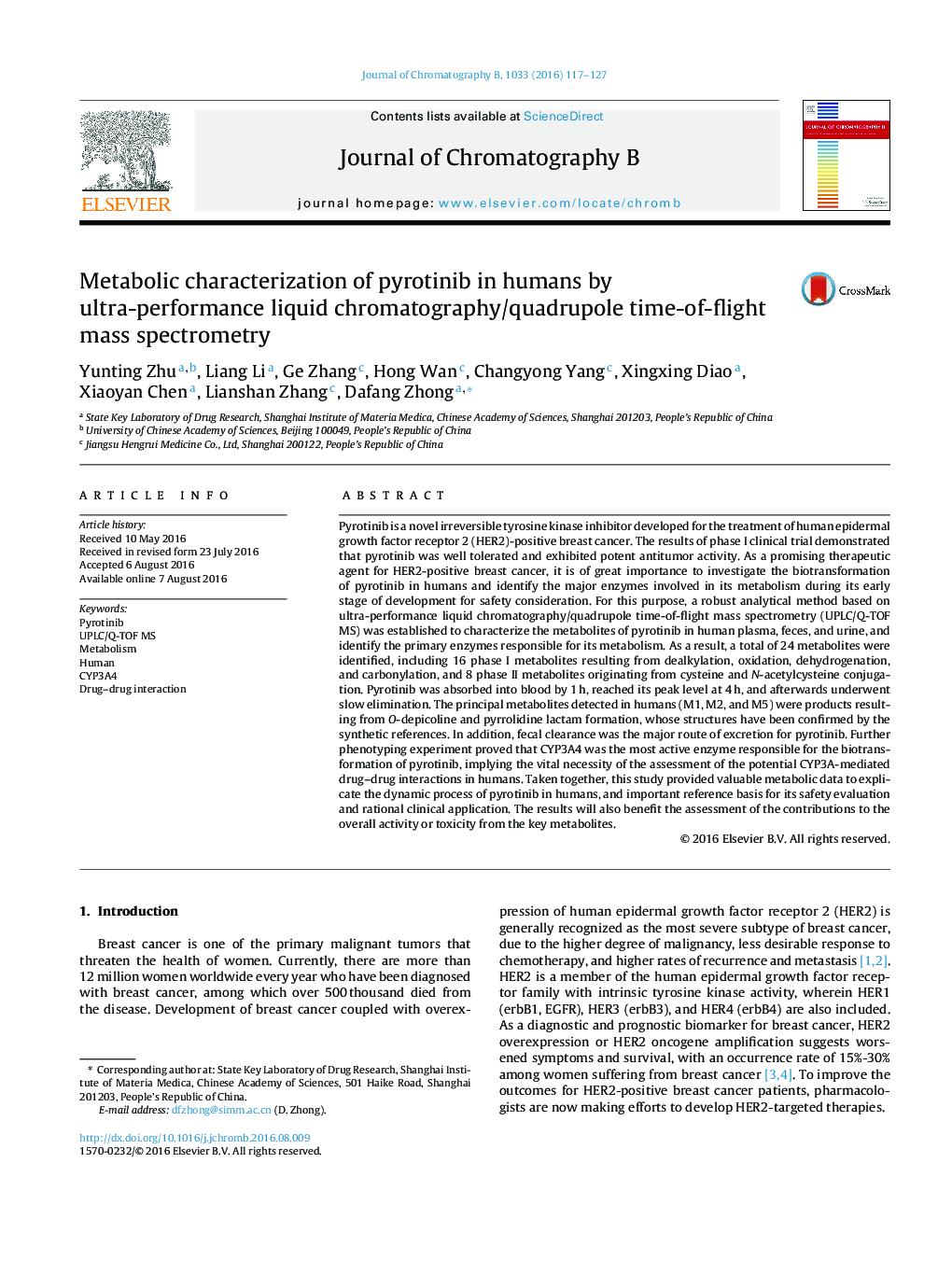| کد مقاله | کد نشریه | سال انتشار | مقاله انگلیسی | نسخه تمام متن |
|---|---|---|---|---|
| 1211852 | 1494024 | 2016 | 11 صفحه PDF | دانلود رایگان |
عنوان انگلیسی مقاله ISI
Metabolic characterization of pyrotinib in humans by ultra-performance liquid chromatography/quadrupole time-of-flight mass spectrometry
دانلود مقاله + سفارش ترجمه
دانلود مقاله ISI انگلیسی
رایگان برای ایرانیان
کلمات کلیدی
موضوعات مرتبط
مهندسی و علوم پایه
شیمی
شیمی آنالیزی یا شیمی تجزیه
پیش نمایش صفحه اول مقاله

چکیده انگلیسی
Pyrotinib is a novel irreversible tyrosine kinase inhibitor developed for the treatment of human epidermal growth factor receptor 2 (HER2)-positive breast cancer. The results of phase I clinical trial demonstrated that pyrotinib was well tolerated and exhibited potent antitumor activity. As a promising therapeutic agent for HER2-positive breast cancer, it is of great importance to investigate the biotransformation of pyrotinib in humans and identify the major enzymes involved in its metabolism during its early stage of development for safety consideration. For this purpose, a robust analytical method based on ultra-performance liquid chromatography/quadrupole time-of-flight mass spectrometry (UPLC/Q-TOF MS) was established to characterize the metabolites of pyrotinib in human plasma, feces, and urine, and identify the primary enzymes responsible for its metabolism. As a result, a total of 24 metabolites were identified, including 16 phase I metabolites resulting from dealkylation, oxidation, dehydrogenation, and carbonylation, and 8 phase II metabolites originating from cysteine and N-acetylcysteine conjugation. Pyrotinib was absorbed into blood by 1Â h, reached its peak level at 4Â h, and afterwards underwent slow elimination. The principal metabolites detected in humans (M1, M2, and M5) were products resulting from O-depicoline and pyrrolidine lactam formation, whose structures have been confirmed by the synthetic references. In addition, fecal clearance was the major route of excretion for pyrotinib. Further phenotyping experiment proved that CYP3A4 was the most active enzyme responsible for the biotransformation of pyrotinib, implying the vital necessity of the assessment of the potential CYP3A-mediated drug-drug interactions in humans. Taken together, this study provided valuable metabolic data to explicate the dynamic process of pyrotinib in humans, and important reference basis for its safety evaluation and rational clinical application. The results will also benefit the assessment of the contributions to the overall activity or toxicity from the key metabolites.
ناشر
Database: Elsevier - ScienceDirect (ساینس دایرکت)
Journal: Journal of Chromatography B - Volumes 1033â1034, 15 October 2016, Pages 117-127
Journal: Journal of Chromatography B - Volumes 1033â1034, 15 October 2016, Pages 117-127
نویسندگان
Yunting Zhu, Liang Li, Ge Zhang, Hong Wan, Changyong Yang, Xingxing Diao, Xiaoyan Chen, Lianshan Zhang, Dafang Zhong,